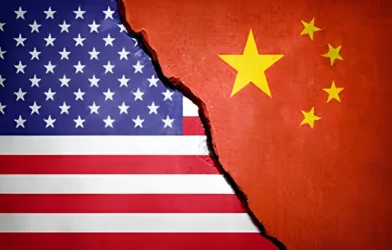Author: Aditya Pareek | EQMint | General News
India’s EV Dream Needs a Pragmatic Partner
In a candid industry reflection, Nirmal Kumar Minda, Chairman of Uno Minda Limited, has urged India to collaborate with China on electric vehicle (EV) technology for the next five to ten years. His statement, made at an automotive industry event, underscores a pragmatic approach—recognizing China’s dominance in the EV ecosystem while calling for India to use this time to develop its own technological and manufacturing muscle.
Minda’s message is clear: India cannot afford to isolate itself from the world’s leading EV technology hub if it wants to accelerate its own transition to electric mobility. “For the short term, we need to work with them. They have next-generation technology and are cost-effective in areas like batteries, powertrains, and advanced driver-assistance systems,” he noted.
The Harsh Reality: China’s Tech Lead
China currently accounts for nearly 40 percent of global EV production and has built unmatched expertise across the value chain—from battery cells and traction motors to charging infrastructure and software integration. More importantly, it controls the supply of rare-earth permanent magnets (REPMs)—a critical component for EV motors.
In contrast, India’s EV ecosystem remains heavily dependent on imports, not just for batteries but also for specialized electronics and magnet materials. Minda believes that until India achieves sufficient self-reliance, collaboration is the only strategic route forward.
“Our focus should be on learning, localizing, and scaling. We should work with China for five to ten years and in that period, become self-reliant—just like they did,” Minda asserted.
A Time-Bound Collaboration Strategy
Minda’s call is not for long-term dependency but for a phased roadmap—one that allows India to gain technological capability while setting strict time limits for reliance on Chinese inputs.
He outlined a four-stage roadmap India’s EV industry could follow over the next decade:
- Technology Transfer and Joint Ventures (Years 1–3):
Collaborate with Chinese EV tech firms for access to powertrain, battery, and ADAS technologies through joint ventures and licensing. Uno Minda has already partnered with Suzhou Inovance Automotive to manufacture high-voltage powertrains in India. - Localization and Scale-Up (Years 3–5):
Establish large-scale domestic manufacturing hubs for EV components, reducing import dependency and leveraging India’s cost advantages. - Research and Development (Years 5–8):
Expand R&D investment into homegrown battery chemistries, advanced sensors, and software systems, making Indian firms globally competitive. - Self-Reliance and Export Capability (Years 8–10):
Transition from being an assembly hub to a full-stack manufacturing and export economy for EV components.
This strategy, according to Minda, can help India develop the same kind of ecosystem China built over two decades—but in half the time.
The Balancing Act: Policy, Security, and Pragmatism
Minda’s proposition is not without risks. India’s geopolitical tensions with China, coupled with the government’s push for “Atmanirbhar Bharat” (self-reliant India), make any partnership a delicate issue. However, Minda insists that national security and strategic autonomy should not be compromised, even as India engages in short-term collaboration.
He stresses that India must adopt a calibrated engagement model—working with China where it accelerates capability building, while simultaneously developing indigenous alternatives in critical areas such as rare-earths, battery minerals, and semiconductors.
“There’s a fine line between dependence and collaboration,” Minda said. “We must ensure this partnership is temporary and purpose-driven.”
The Bigger Picture: India’s EV Vision
India’s EV ambitions are enormous. The government aims for 30 percent of new vehicle sales to be electric by 2030. Incentives under the FAME and PLI schemes have triggered a wave of investments across the value chain—from vehicle manufacturers to component suppliers. Yet, the technological gap remains wide.
Most Indian EV manufacturers still rely on imported cells and components, while the domestic R&D ecosystem is nascent. Minda believes that bridging this gap quickly is critical to achieving India’s climate goals and industrial competitiveness.
“Our industry cannot afford to spend another decade reinventing the wheel,” he said. “If we work smartly now, India can become a design-and-manufacturing hub for EVs by the mid-2030s.”
Risks and Rewards of Collaboration
Working with China brings both opportunity and vulnerability. On one hand, it could rapidly accelerate India’s EV adoption curve and lower production costs. On the other, it could expose India to supply-chain shocks or geopolitical leverage.
Analysts point out that China’s recent restrictions on exporting rare-earth magnets to India highlight how dependence can be weaponized. Therefore, Minda’s plan hinges on using the collaboration window wisely—to build domestic resilience, not create new dependencies.
If executed correctly, India could leverage Chinese know-how to achieve “technological leapfrogging”—moving directly to next-generation EV architectures without going through decades of incremental development.
A Wake-Up Call for Indian Industry
Minda’s statement serves as a wake-up call for policymakers and industry leaders who believe that isolation equals independence. True self-reliance, he argues, comes from understanding, adapting, and then owning technology.
Uno Minda itself is transforming—from a traditional auto-component supplier to an EV systems manufacturer, investing over 4 percent of its annual revenue in R&D. The company plans to increase exports from 11 percent to nearly 20 percent of its turnover in the next five years.
This evolution reflects Minda’s larger philosophy: collaborate today to compete tomorrow.
The Road Ahead
The next decade will determine whether India becomes a true EV powerhouse or remains an assembler of imported technology. For that, Minda’s pragmatic realism could be exactly what the sector needs—a strategy that blends ambition with adaptability.
India’s EV revolution will not be built in isolation. It will be forged through partnerships, learning, and time-bound collaboration—the kind Minda believes can turn today’s dependency into tomorrow’s dominance.
For more such information visit EQMint.
Disclaimer: This article is based on information available from public sources. It has not been reported by EQMint journalists. EQMint has compiled and presented the content for informational purposes only and does not guarantee its accuracy or completeness. Readers are advised to verify details independently before relying on them.









